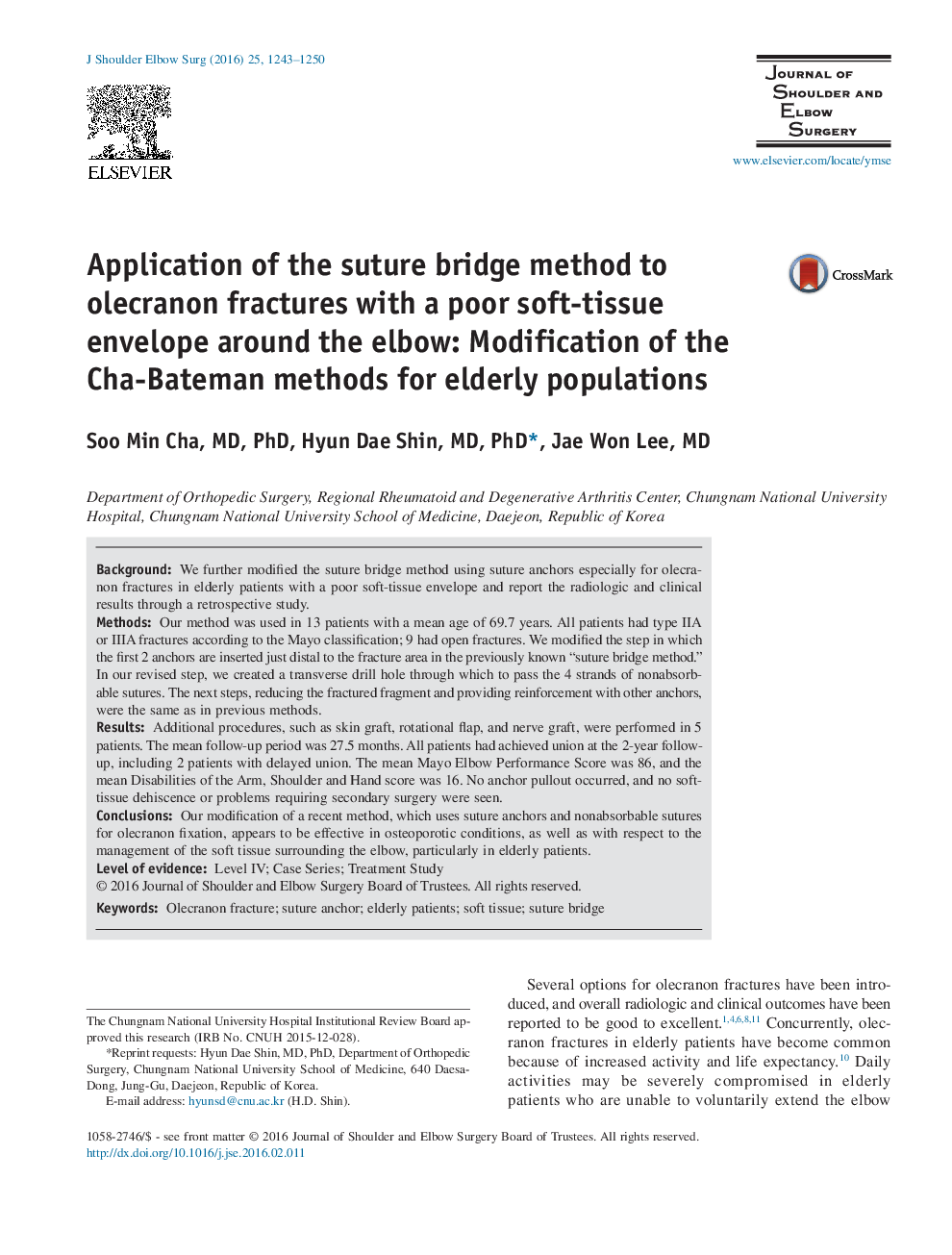| Article ID | Journal | Published Year | Pages | File Type |
|---|---|---|---|---|
| 4072798 | Journal of Shoulder and Elbow Surgery | 2016 | 8 Pages |
BackgroundWe further modified the suture bridge method using suture anchors especially for olecranon fractures in elderly patients with a poor soft-tissue envelope and report the radiologic and clinical results through a retrospective study.MethodsOur method was used in 13 patients with a mean age of 69.7 years. All patients had type IIA or IIIA fractures according to the Mayo classification; 9 had open fractures. We modified the step in which the first 2 anchors are inserted just distal to the fracture area in the previously known “suture bridge method.” In our revised step, we created a transverse drill hole through which to pass the 4 strands of nonabsorbable sutures. The next steps, reducing the fractured fragment and providing reinforcement with other anchors, were the same as in previous methods.ResultsAdditional procedures, such as skin graft, rotational flap, and nerve graft, were performed in 5 patients. The mean follow-up period was 27.5 months. All patients had achieved union at the 2-year follow-up, including 2 patients with delayed union. The mean Mayo Elbow Performance Score was 86, and the mean Disabilities of the Arm, Shoulder and Hand score was 16. No anchor pullout occurred, and no soft-tissue dehiscence or problems requiring secondary surgery were seen.ConclusionsOur modification of a recent method, which uses suture anchors and nonabsorbable sutures for olecranon fixation, appears to be effective in osteoporotic conditions, as well as with respect to the management of the soft tissue surrounding the elbow, particularly in elderly patients.
